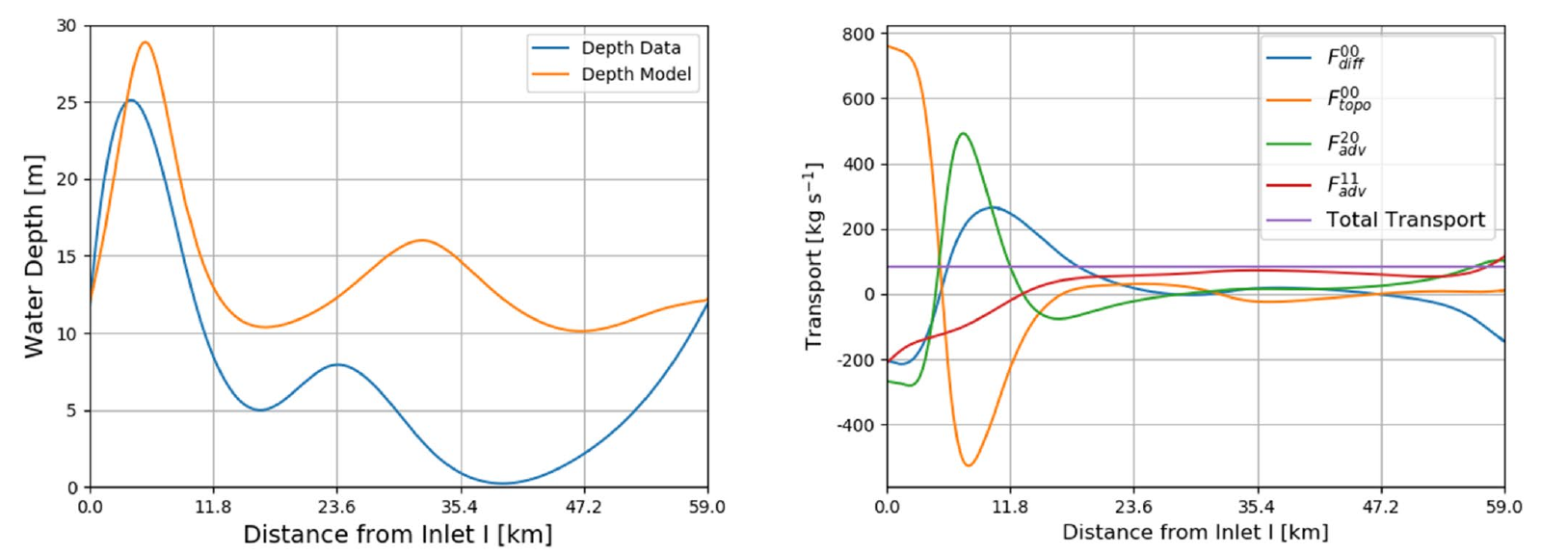H.M. Schuttelaars1, X. Deng1, and T. De Mulder2
1 Delft Institute of Applied Mathematics, Delft University of Technology, The Netherlands.
2 Hydraulics Laboratory, Civil Engineering, Faculty of Engineering and Architecture, Ghent University, Belgium.
Introduction
Tidal basins are connected to the outer sea by one or more tidal inlets. In this presentation, we focus on so-called double inlet systems, i.e., tidal inlet systems with two connecting channels. A typical example is the Marsdiep-Vlie system. Using an idealised morphodynamic model, we aim at directly finding morphodynamic equilibria of double inlet systems and assess their stability. For unstable configurations, the linear stability mechanism will be presented.
Methods
The depth--averagerd shallow water equations, suspended sediment transport equation and the bed evolution equation are used to model the morphodynamics of the double inlet system. This system of equations is analysed using an asymptotic analysis in a small parameter, the ratio of the tidal amplitude of the undisturbed water depth. Since the water motions and sediment transport take place on a much shorter timescale than the bed evolution, the bed is considered fixed on the fast hydrodynamic timescale. Only the tidally averaged divergences and convergences of the sediment transport result in a change of the bed profile on the long timescale. After discretizing the model equations using the finite elements method, morphodynamic equilibria are found using a continuation method: this is a method to directly obtain solutions of the equations sought for such that the tidally averaged sediment transport is constant in the tidal inlet system.
Results
As an example, the width-averaged equilibrium bathymetry is calculated using the characteristic parameters of the Marsdiep-Vlie system. In Fig.1, left panel, the blue solid line represents the width-averaged depth obtained from observations, while the orange line is the width-averaged depth, found with the idealised model. The main characteristics (i.e., a very deep section close to the Marsdiep inlet and a tidal high when moving into the basin) are qualitatively reproduced. This equilibrium is analysed by assessing the various sediment transport contributions (Fig.1, right panel), showing that there is a tidally averaged sediment transport directed from the Marsdiep inlet to the Vlie inlet, even though the prescribed tidally averaged water transport is from the Vlie to the Marsdiep inlet.
In this presentation, the sensitivity of morphodynamic equilibria to forcing conditions and their linear stability will be systematically discussed.

Figure 1: Morphodynamic equilibrium (left panel) and associated sediment transport contributions in a double inlet system with the characteristics of the Marsdiep-Vlie system.
I. Surname1*, F.N. Another-Surname2 , Y. Next-Surname2
1 University Name, Country; 2 Organization Name, Country
* Corresponding author: mail.name@organization.org


